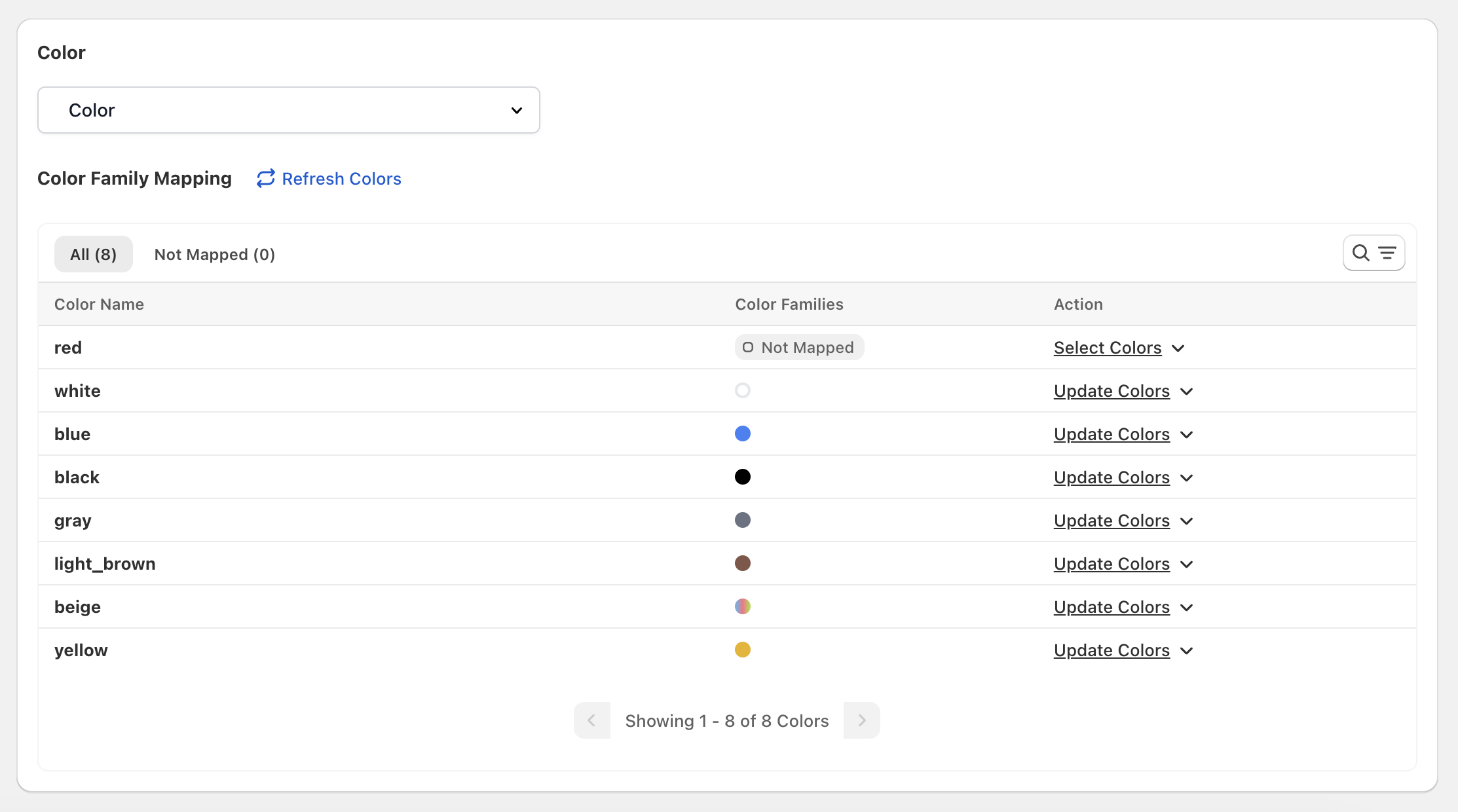#
Importing Your Shopify Catalog
#
Introduction
Nimstrata imports your Shopify catalog to Google Cloud's Retail API and keeps it up-to-date. Inventory and pricing is synchronized in real-time, and full catalog indexing happens at least once per day.
Your catalog import settings define how data should be mapped from Shopify fields to Google Cloud's Retail API fields. Nimstrata will automatically import Shopify's standard data including product prices, descriptions, and collections. However, some fields are unique to Google Cloud's Retail API and should be mapped to your custom data, tags, or other app metafields for best results.
Imported fields are used to create product filters on search and collection pages.
Google Merchant Center
If you already sync your catalog data with Google Merchant Center, you should follow the same field mapping conventions.
#
Retail API Fields
#
Brand
The Brand field in Google Cloud's Retail API can either be imported as Shopify's default Vendor field, or, you can use a custom metafield.
#
Reviews
The Reviews fields in Google Cloud's Retail API can be imported from a custom metafield. There are two inputs that make up reviews:
- Rating Count - The number of ratings that a product has
- Average Rating - The average value of a product rating, such as 4.5
REVIEWS.io Integration
If you use REVIEWS.io, the product metafields are reviewscouk.total and reviewscouk.rating
#
Audience
The Audience fields in Google Cloud's Retail API are Gender and Age Group, and can be imported from custom metafields or Tag values.

#
Custom Attributes
#
Metafields
Metafields encompass the custom data in your catalog. Each enabled metafield will create a custom attribute for filtering your product display pages.
Refresh Metafields
If metafields have been recently added to the product catalog and are not visible in Retail Cloud Connect, click Refresh Metafields. This requires a full catalog export from Shopify, so large product catalogs may take several hours to show all metafields.
#
Tag Groups
Tag Groups can be used for additional filtering if product data is not available in a metafield.
To create additional product filters using tags, name a tag group and select the tags you would like associated with the group. You can also use a tag prefix to capture all tags that utilize the same format.
Quality Over Quantity
We recommend importing up to Ten Custom Attributes to ensure speed when delivering search results. While some catalogs may contain hundreds of metafields and tag groups, additional fields don't necessarily improve AI model quality.
#
Color Families
Two values for colors will be imported for each product:
- Color - The product color field by default, or another custom field
- Color Family - One of 13 colors that the product color is mapped to
If the default color field is changed, press Refresh Colors to re-index the product catalog. Large product catalogs can take several hours to sync.

#
Exclude Products
If there are products that you do not want returned by the Retail API, such as extended warranties or shipping bundles, you can tag these products with a tag such as, Hidden, to exclude them from imports.
#
Advanced Use Cases
#
Collection Filters
Retail Cloud Connect imports all Shopify collections by default. However, some merchants use collections for marketing campaigns or landing pages and prefer to only import a subset of collections to simplify navigation or product filtering.
All Data Imported
Importing specific collections only impacts filtering, all product and collection data will still be imported to the Retail API. To prevent specific products from being imported, please see the Exclude Products instructions above.
If your primary navigation contains a link to a "T-Shirts" collection, but you have another collection called "Red T-Shirts" that is not linked from your navigation, you may prefer to import it as a specific collection. This would allow users to select "Red T-Shirts" as a filter from the "T-Shirts" collection page.
If some red t-shirts are also in other collections, such as a "Spring Sale" marketing campaign collection, importing specific collections prevents navigation clutter by stopping "Spring Sale" from displaying on the T-Shirts collection pages.
Google Cloud's Retail API requires each product to be assigned to at least one category (Shopify Collection). If you are using Collection Filters, you may see Default returned as a filter on your storefront.
To prevent the Default filter from appearing, simply create a Facet Control in your Google Cloud catalog project.